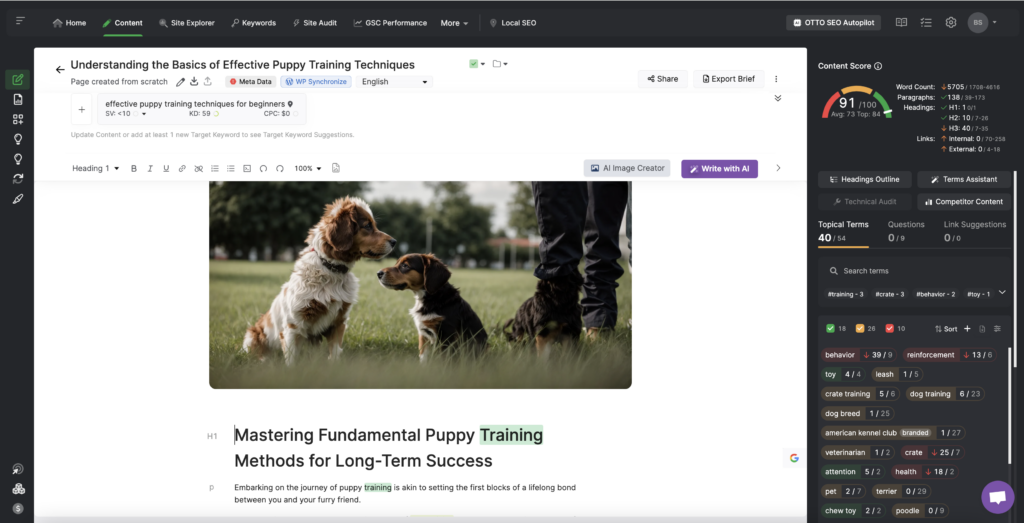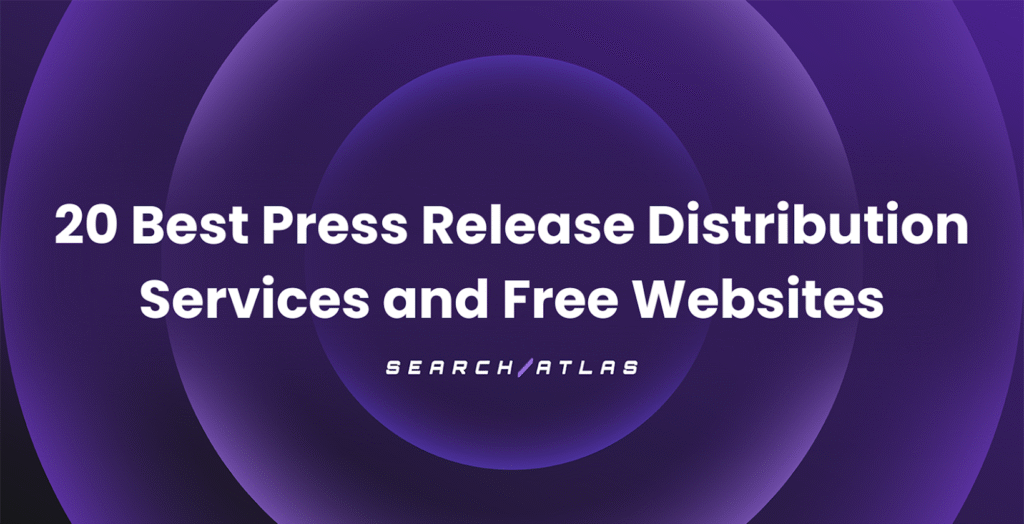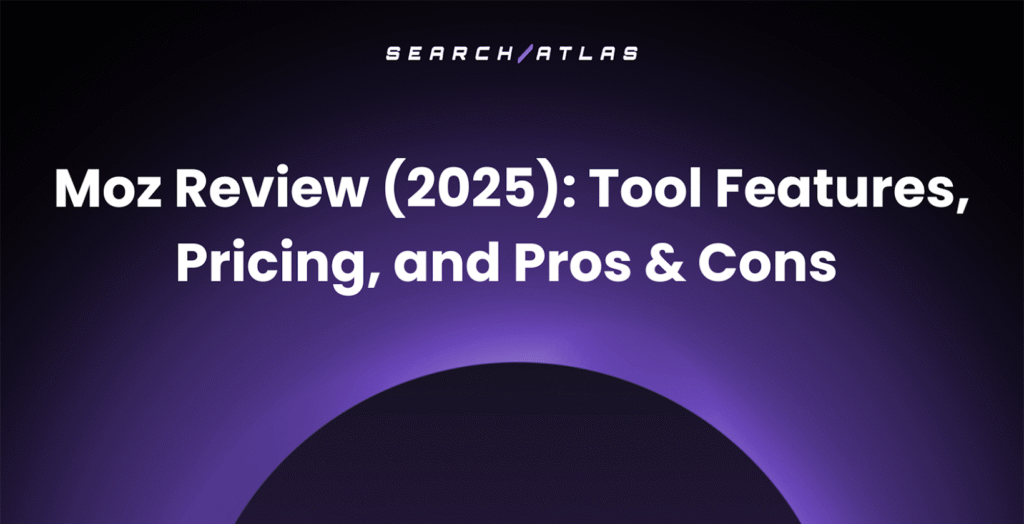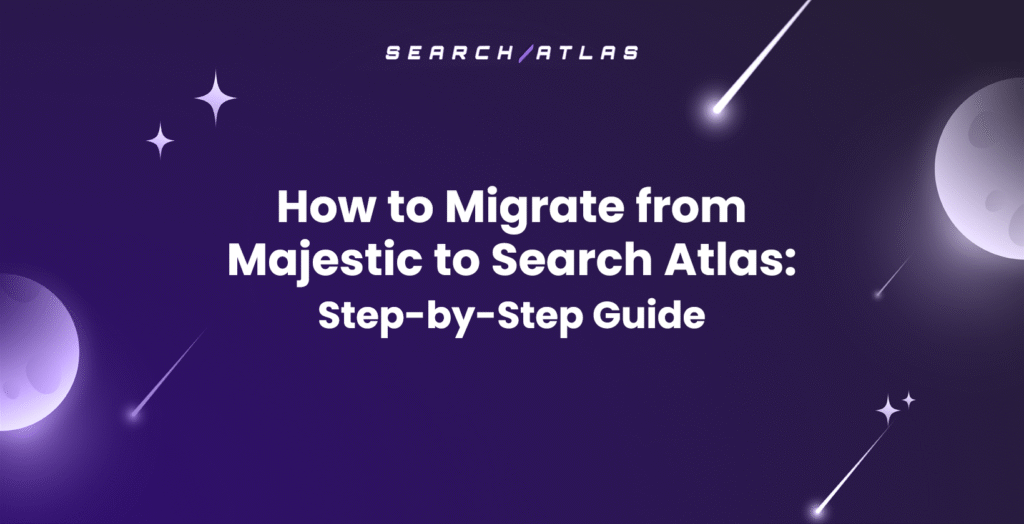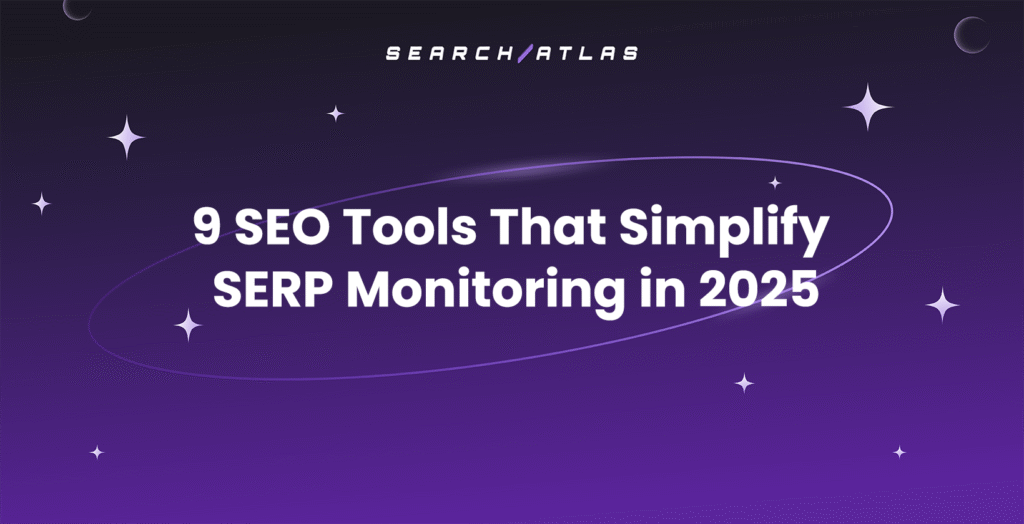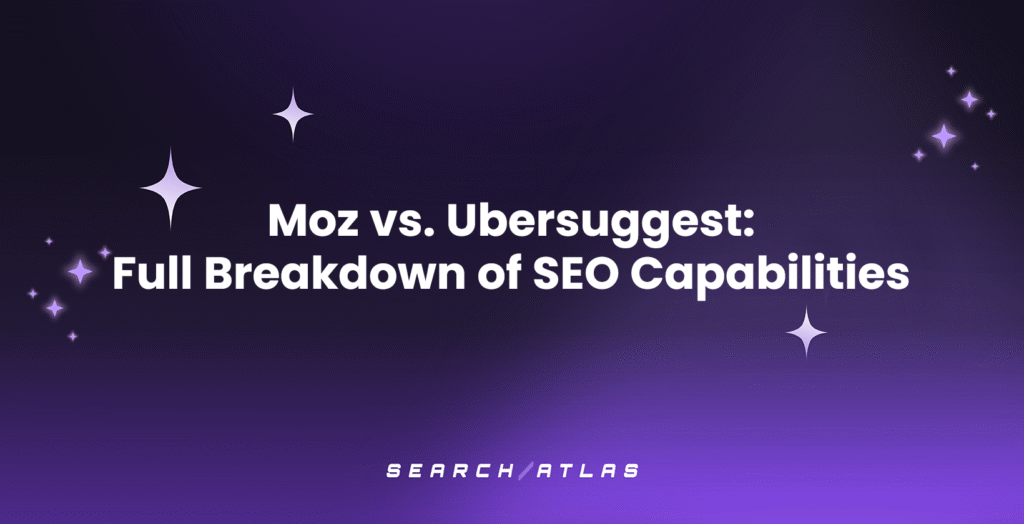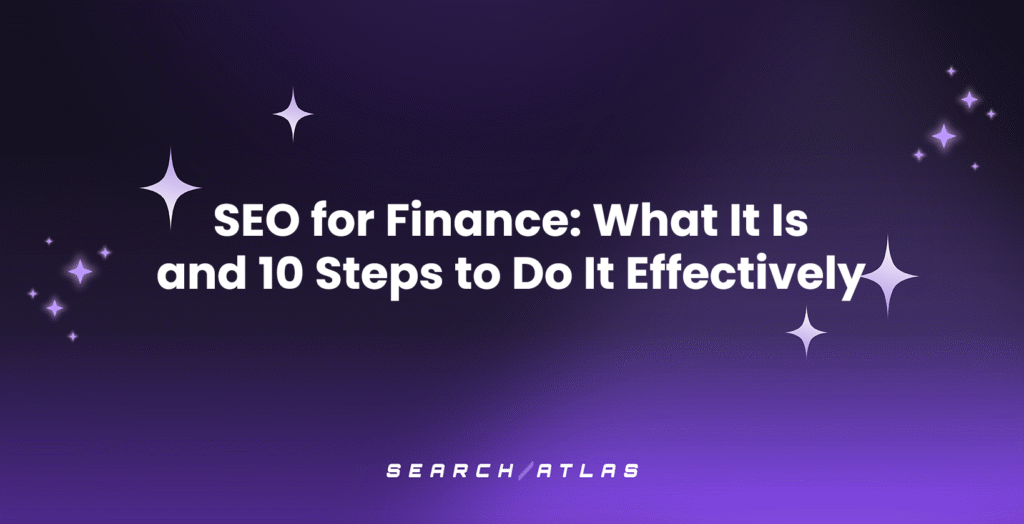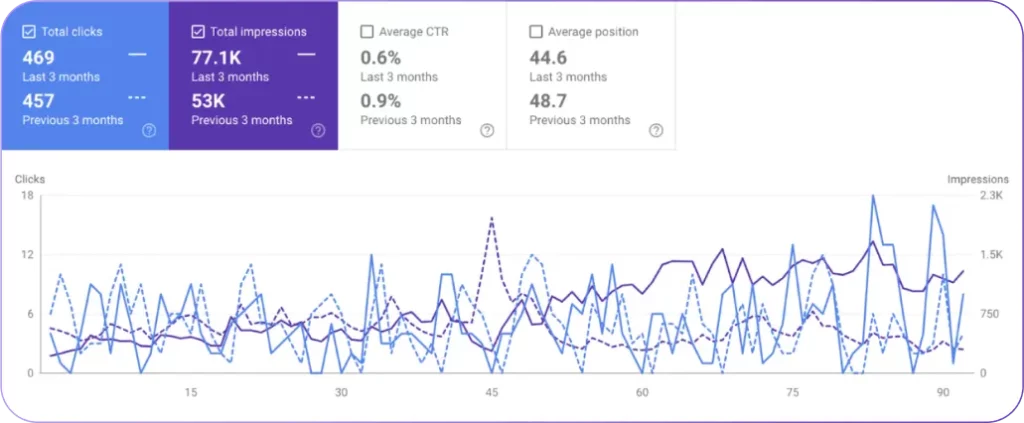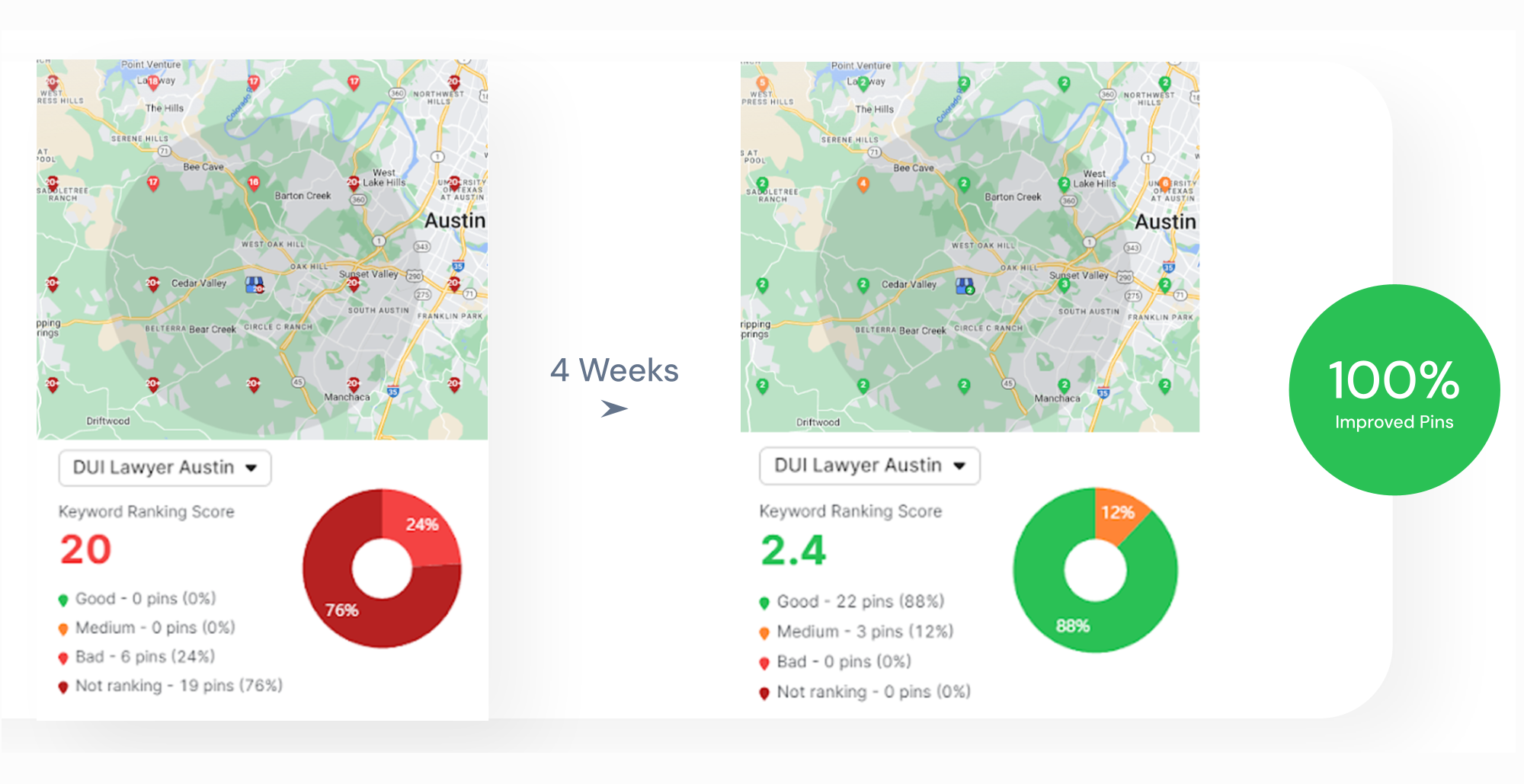The invisible yet powerful, meta tags play a pivotal role in optimizing a website for search engine visibility, acting as a silent herald of your web content’s core message.
A nuanced approach to meta tag optimization can mean the difference between the top spot in search results and being buried beneath a pile of competitor content. This ultimately comes down to relevancy for search engines, which you can ready more about in our post What is Google E-E-A-T.
Mastering the art of precision in title tags, descriptions, and proper attribute use is key to maximize your online impact and ensuring your pages are enticing to both search engines and human visitors. With the right strategies, each tag becomes a cog in the finely-tuned machine of your website’s SEO framework. 🏗️
Keep reading to unlock the secrets of meta tag optimization, where every character counts and every tag can tip the scales in your favor.
What Are Meta Tags and Why Is Optimization Important?
Meta tags are snippets of HTML code that give information about a webpage to both search engines and site visitors. Traditionally, meta tags are used in the <head> section of an HTML document and do not appear on the actual webpage.
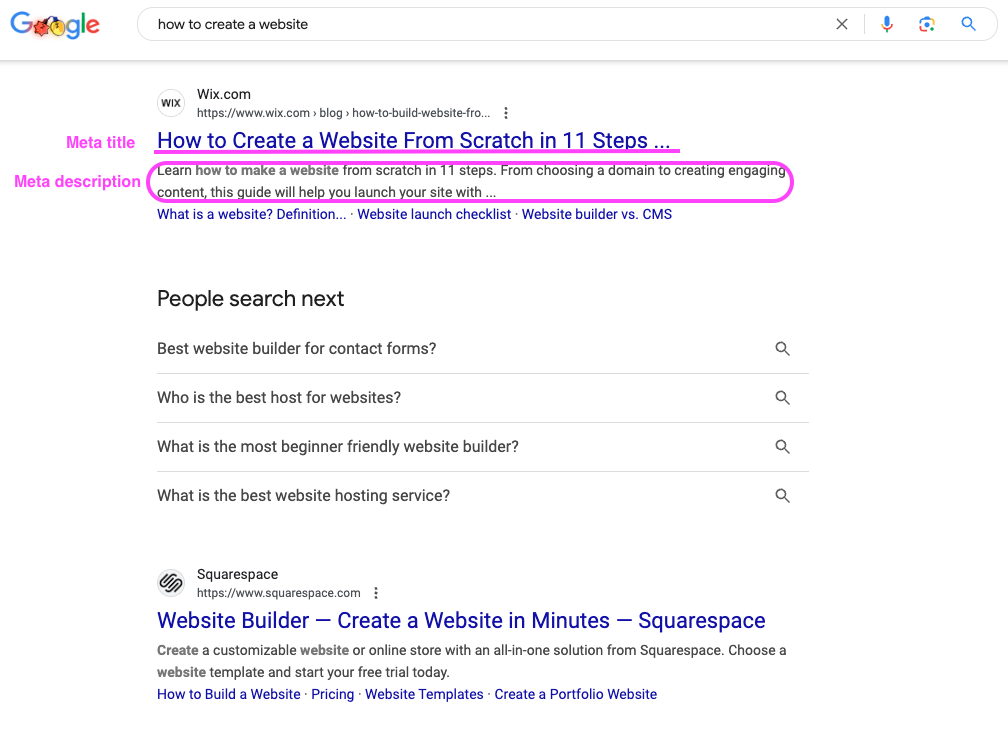
So, why are meta tags important?
They offer essential information about the page, which can influence how a page is indexed and displayed in search engine results. Meta tags, especially title and description tags, are essential to search engine rankings, user engagement, and mobile SEO.
Meta tag optimization is important because regular audits of meta tags help optimize a webpage’s search engine ranking and maintains its relevance in search results. Analyzing analytics data is key to refining meta tags and improving SEO outcomes.
Additionally, canonical tags play an essential role in maintaining SEO value by addressing duplicate content issues.
Understanding the Functions of Meta Tags in SEO
Meta tags represent a crucial element within the intricate web of search engine optimization, serving as invisible markers that communicate vital information to search engines.
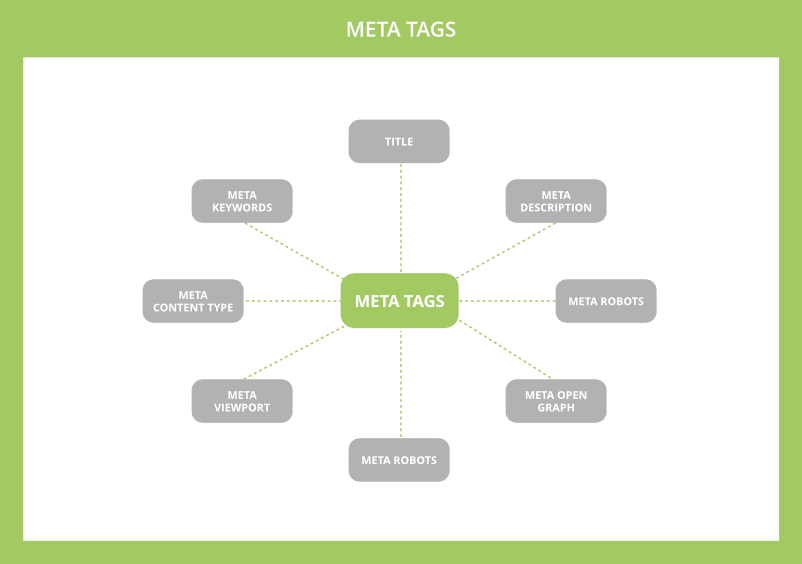
From their unseen position within a webpage’s source code, these HTML elements possess a remarkable ability to shape a site’s presence in search results, all while contributing to the overall user experience without a direct display to the audience on the page.
This introductory passage paves the way for a deeper appreciation of how such a hidden force can carry so much influence, from commanding search engine rankings to finessing the delicate balance of user engagement.
Exploring the Basics of Meta Tag Usage
Meta tag usage is the cornerstone of a well-structured web page, providing search engines with succinct summaries of what the content entails. These HTML snippets are pivotal for informing search engine algorithms, guiding them to categorize and rank web pages accurately within search results.
Implementing meta tags effectively is an art that begins with an understanding of their types and functions: the title tag, the description meta tag, and the various metadata elements that define document settings like character encoding and viewport specifications. Mastery over these tags empowers content creators to direct search engines and enhance click-through rates:
- Title Tag: Sets the stage by establishing the primary keyword focus of the page, a critical factor in its search engine ranking.
- Description Tag: lure users from the search engine results page with a compelling preview, impacting the page’s click-through rates and user interaction.
Additional meta tags, such as those for viewport and character encoding, ensure that the browser properly renders the web page for the best user experience.
How Meta Tags Influence Search Engine Rankings
Meta tags play a pivotal role in communicating with search engines to influence rankings. Properly crafted title tags and accurate metadata descriptions lead to a more favorable appraisal by algorithms, thereby elevating a web page’s prominence in search results.
In their capacity to provide context, meta tags like the description facilitate search engines’ understanding of relevance and content specificity. This not only aids in achieving a prominent placement but also aligns with the search intent of the target audience, increasing the likelihood of conversion.
The Role of Meta Tags in User Experience
Meta tags transcend their technical role by shaping the user’s journey through a digital landscape. A carefully designed title tag acts as a beacon, guiding one’s attention to relevant content, and well-crafted meta descriptions serve as invitations, enticing clicks and ensuring visitors find the value they seek.
The integrity of user interaction with a web page is made or broken at the junction where meta tags meet audience expectations. When information in these tags corresponds with the content, it reduces bounce rates by mitigating user frustration and enhancing satisfaction levels.
| Meta Tag Element | Role in SEO | Impact on User Experience |
|---|---|---|
| Title Tag | Defines the main keyword focus for search engine visibility. | Commands user attention and sets expectations for content relevance. |
| Meta Description | Influences click-through rates from search results. | Acts as a synopsis that entices user engagement and satisfies search intent. |
| Character Encoding | Ensures content is indexed correctly by search engines. | Guarantees content is displayed accurately on different devices and browsers. |
Crafting the Perfect Title Tag for SEO Efficiency
Crafting an impactful title tag requires precision and creativity. As the first impression for potential visitors, it plays a vital role in visibility and search rankings.
Including targeted keywords, ensuring readability, and maintaining an ideal length are key to enhancing click-through rates and SEO performance. This section explores how to create unique, effective title tags that meet modern search algorithms and user expectations, setting the stage for digital success.
Balancing Keyword Usage and Readability in Title Tags
The power of a title tag lies in balancing keywords with readability. By naturally integrating keyphrases into engaging language, you can attract both search engines and users while avoiding keyword stuffing, which harms authenticity and appeal.
Title tag composition needs attention by clearly reflecting the web page’s subject matter without sacrificing the quality of expression. Positive user experiences and sticking to URL structure best practices requires content creators to use natural text optimization. AKA—don’t sound robotic!
Length and Uniqueness Considerations for Title Tag Optimization
Optimal title tag length ensures clarity, preventing truncation in search results and improving click rates. Staying within the recommended character range ensures the full message is visible, boosting relevance for both search algorithms and users.
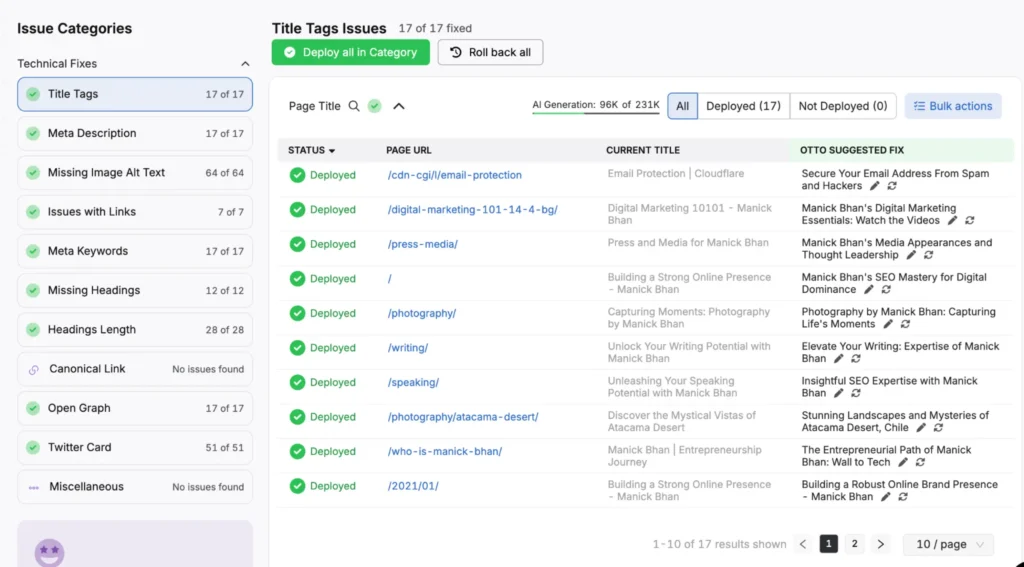
Unique title tags distinguish your page, reinforce brand identity, and help search engines avoid duplicate content issues, enhancing SEO performance.
Writing Meta Descriptions That Boost Click-Through Rates
The magnetic allure of a well-crafted meta description cannot be overstated in the digital marketing realm.
It serves as a succinct yet powerful preview, enticing prospective visitors to click through to a web page from the labyrinth of search results.
Mastery in penning striking meta descriptions can dramatically elevate click-through rates, weaving together relevance, persuasion, and clarity.
The following sections will delve into strategic techniques for distilling a web page’s essence into an engaging meta description, embedding effective calls to action that beckon readers, and sidestepping the common oversights that can hinder a meta description’s potential to convert curiosity into traffic.
Techniques for Writing Compelling Meta Descriptions
An effective meta description acts as a relay between a prospective visitor and the webpage’s content, encapsulating the essence of the article in a couple of power-packed sentences. To pen meta descriptions that magnetize the user’s curiosity, marketers must weave specificity with intrigue, ensuring each word plays its part in highlighting the unique value proposition of the content.
Marketers are encouraged to infuse their meta descriptions with actionable language that prompts readers to take the next step. Strategic placement of a compelling call to action within this HTML element not only increases the click-through rate but also sets the tone for the user experience that follows on the landing page.
Incorporating Effective Calls-to-Action in Meta Descriptions
An enticing call to action (CTA) in a meta description can make the difference between a user merely scanning search results and taking the decisive step to engage with your content. The placement of a CTA should be strategic, acting as a bridge that leads the potential visitor from curiosity to action.
Meta descriptions have the unique capability to not only summarize content but also to actively encourage web traffic. Crafting a CTA that resonates with the target audience requires understanding their needs and interests, funneling this insight into creating an invitation that is both compelling and relevant.
- Strategically place a CTA within the meta description, ensuring it is visible and inviting.
- Employ language that speaks to the interests of the target audience to maximize engagement.
- Craft a message that is not just informative, but also sparks action.
Avoiding Common Meta Description Pitfalls
Avoiding common pitfalls when drafting meta descriptions is as critical as the crafting itself. A frequent misstep involves exceeding the optimal length, leading search engines to truncate the description, which can cause loss of crucial information and a consequent drop in click-through rates. Ensuring descriptions are concise and to-the-point is vital for maintaining the searcher’s attention.
Another oversight to be wary of is repetition; a meta description should stand out with unique value rather than recycling content from within the web page or echoing other descriptions across the site. Duplicating content not only diminishes user interest but also squanders an opportunity to distinguish a page in the competitive realm of search engine results, weakening the website’s overall performance.
Utilizing Keyword Meta Tags to Your Advantage
In an era where online visibility is intertwined with success, meta tags, especially keyword meta tags, become indispensable in the arsenal of digital marketers and content creators.
Balancing the technical precision with strategic foresight leads to the meticulously chosen keywords that form the cornerstone of effective meta tag usage.
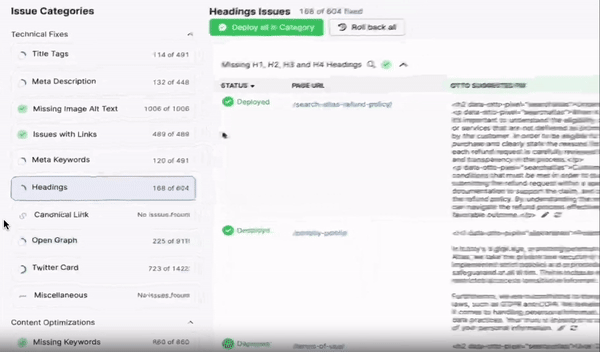
While embracing proven methods for meta tag optimization fortifies the structural integrity of a website’s SEO, it’s imperative to stay attuned to the evolving landscape that now questions the weight of meta keywords in modern search engine algorithms.
This section delves into the nuances of researching and selecting the optimal keywords for meta tags, adheres to the established best practices for optimization, and unravels the complexities behind the waning significance of meta keywords, guiding readers through a journey of informed meta tag strategy deployment.
Researching and Selecting Target Keywords for Meta Tags
Embarking on keyword research for meta tags is akin to setting the foundation for a building; it’s the bedrock upon which search engine understanding and user relevance stand.
Careful selection of target keywords hinges on an intimate knowledge of the brand and an analysis of which terms are frequently searched, ensuring the metadata aligns with both business objectives and user queries.
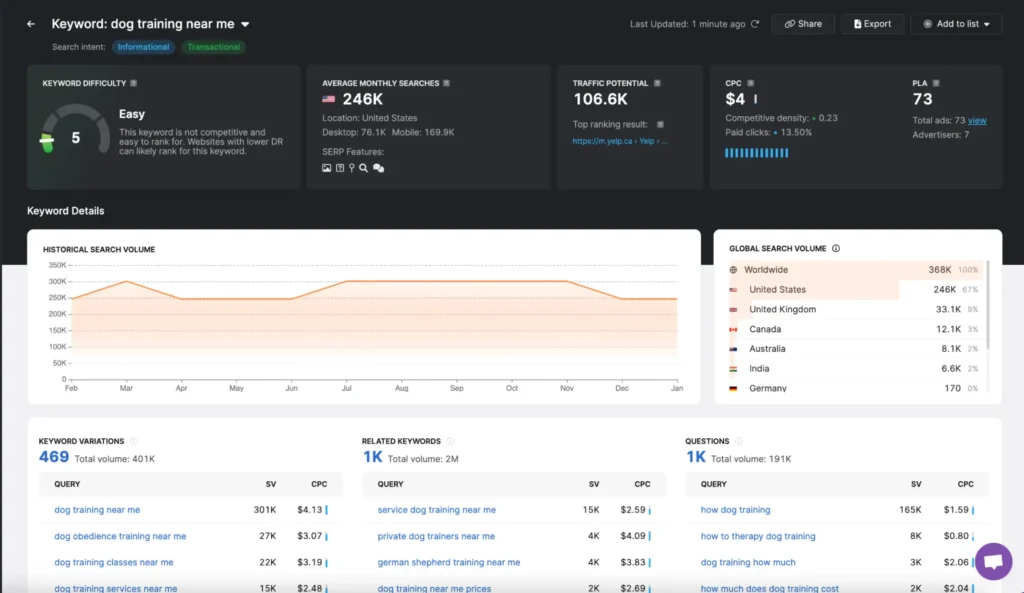
Employing Tools Like Search Atlas’s Keyword Researcher facilitates marketers in unearthing the gem-like keywords that hold the power to unlock new strata of web visibility. The analysis focuses on relevance, search volume, and competitiveness to craft meta tags that are robust yet finely tuned to appeal to search engine algorithms and human behavior alike.
Best Practices for Keyword Meta Tag Optimization
When optimizing keyword meta tags, vigilance is key: Choose terms that accurately reflect the content and anticipate user queries. Composing meta tags demands precision—every term should be selected with an understanding of its relevance to the content and the frequency with which potential visitors might be searching for it.
| Meta Tag Component | Relevance to Content | Potential User Queries |
|---|---|---|
| Primary Keyword | Directly reflects the main topic or product. | Incorporates terms users are likely to search for. |
| Secondary Keywords | Supports the primary keyword, provides additional context. | Includes synonyms or related phrases for depth. |
Maximizing relevance while steering clear of overstuffing is paramount for efficient keyword meta tag deployment: this ensures a natural and engaging user experience. The artful integration of keywords into meta tags should mirror organic language use, enhancing content accessibility for users and maintaining integrity for search engine crawlers.
Understanding the Declining Importance of Meta Keywords
Once deemed a linchpin for search engine discovery, the reliance on meta keyword tags has significantly waned in the context of modern SEO. As search engine algorithms have evolved, they have moved beyond the simplicity of meta keyword density, focusing instead on comprehensive content analysis and user engagement metrics.
The fading significance of keyword meta tags in search rankings does not imply their complete obsolescence, though. They still hold value as a component of a broader, more nuanced approach to SEO that emphasizes quality content, natural text optimization, and a clear understanding of user intent.
| SEO Component | Historical Importance | Current Significance |
|---|---|---|
| Meta Keyword Tags | Crucial for search engine rankings. | Superseded by sophisticated content analysis and user metrics. |
Making the Most of Image Alt Text for SEO
In the realm of search engine optimization, the significance of image alt text cannot be overstated.
Serving as both a beacon of accessibility and a catalyst for image search visibility, alternative text within images is an invaluable facet of any astute SEO strategy. Through meticulous crafting of alt attributes, content managers can enhance the SEO-friendliness of website imagery, ensuring they contribute to the page’s overall relevancy and discoverability.
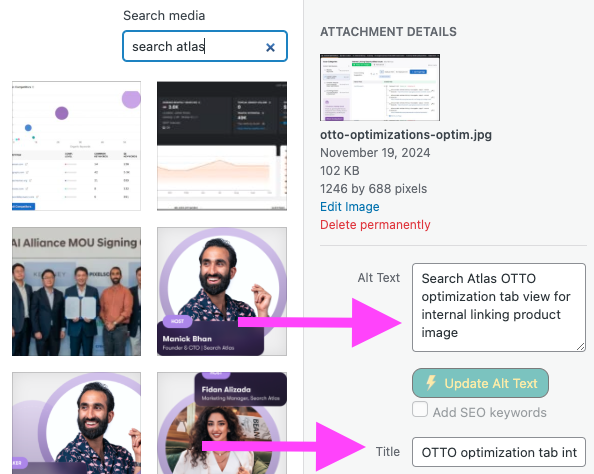
This subsection goes into best practices for composing descriptive alt text that aligns with search engine prerequisites, advises on the optimal formatting of alt text meta tags, and underscores the pivotal role they play in bolstering a website’s presence on search engine results pages.
Importance of Alt Text for Image Search Visibility
Alt text for images is a vital link between accessibility and SEO. By providing descriptive alt attributes, images contribute to search optimization, boosting visibility in image searches and supporting users relying on screen readers.
Thoughtfully crafted alt text enhances how search engines index and interpret visuals, transforming them from mere decorations into searchable assets.
- Descriptive alt attributes improve image visibility and drive engagement.
- Well-written alt text enriches overall SEO performance.
- Targeted keywords make images discoverable for relevant queries, unlocking additional traffic potential.
Alt text ensures your visuals work harder for both users and search engines.
How to Properly Format Alt Text Meta Tags
Proper formatting of alt text meta tags is a subtle yet crucial aspect of SEO. These snippets of text should be concise, focusing on describing the image’s content and purpose within the context of the page, while naturally incorporating relevant keywords. An optimal alt text enhances a website’s accessibility, provides context when images cannot be displayed, and boosts the site’s search engine positioning.
Following simple guidelines can elevate the efficacy of image alt attributes. It is recommended to use plain language that accurately represents the image, avoids keyword stuffing, and does not exceed 125 characters to cater to various screen readers.
Correctly formatted alt text bridges the gap between visual content and textual insights, aiding search engines in indexing the image suitably:
| Consideration | Description | Example |
|---|---|---|
| Conciseness | Alt text should be brief yet descriptive. | “Woman hiking on mountain trail” |
| Keyword Relevance | Incorporate keywords seamlessly within the description. | “SEO conference speaker at podium” |
| Contextual Accuracy | Ensure alt text aligns with the content of the page. | “Freshly baked chocolate chip cookies on cooling rack” |
Leveraging Meta Robots Tags to Direct Search Engines
Within the world of SEO, the strategic deployment of meta robots tags is quintessential in navigating the currents that guide search engines through a website’s content.
These directives, which reside in the HTML source code, empower webmasters to communicate directly with search engines, signaling how to interact with the pages they encounter.
Understanding the nuances of index and noindex tags, along with when to apply follow and nofollow link attributes, is vital for optimizing content discoverability and controlling the flow of search engine crawling.
Proper implementation of these tags ensures that webmasters can precisely orchestrate their visibility on search engine results pages, reinforcing the site’s digital presence and authority.
Deciphering the Use Cases for Index and Noindex Tags
Understanding the use of index and noindex tags is crucial for effective SEO. Index tags tell search engines to include a webpage in search results, while noindex tags instruct them to exclude it.
Use noindex tags to prioritize privacy, curate content, or keep non-relevant pages out of search results. This will only ensure valuable content is discoverable. 🗺️
When and How to Employ Follow and Nofollow Tags
Deciding when to use follow or nofollow tags depends on the webmaster’s intent to pass authority, known as “PageRank.”
Follow tags signal search engines to treat links as credible endorsements, boosting the linked page’s ranking. Nofollow tags, on the other hand, prevent authority transfer, often used for paid ads or unverified user-generated content.
Strategic Use of Nofollow Tags can be instrumental in sculpting a site’s PageRank flow, directing search engines to maintain the concentration of PageRank within internally linked pages rather than distributing it through external links.
This focused approach is vital for maximizing a website’s SEO footprint and ensuring that the endorsement inherent in hyperlinks is cast selectively, enhancing the site’s relevancy and domain authority within the digital landscape.
Ensuring Proper Implementation of Meta Robots Tags
Ensuring the proper implementation of meta robots tags is essential for steering the accessibility and indexing of web pages by search engines. These tags require precise application to dictate a page’s visibility properly, reinforcing the content’s digital presence without compromising confidentiality or keyword integrity.
Webmasters must be adept at embedding index or noindex, and follow or nofollow directives correctly within the HTML source code to achieve the desired control over search engine crawling and indexing behaviors.
This attention to detail is a mark of expertise in the realm of search engine optimization, allowing for a tailored approach to online content strategy.
Harnessing the Power of Canonical Tags for Content
In the landscape of search engine optimization, the use of canonical tags emerges as a sophisticated tool for content managers and webmasters, addressing the challenges of duplicate content head-on.
These HTML elements serve as critical signals to search engines, indicating the ‘master’ version of repetitive content, thereby maintaining the integrity of search rankings.
The following discourse aims to equip readers with the knowledge to adeptly mitigate duplicate content issues, set up canonical tags to enhance SEO, and extend their use across multiple domains.
Establishing a firm grasp on canonical tags is not only a testament to meticulous web management but also solidifies a website’s standing in the competitive realm of online visibility.
Mitigating Duplicate Content Issues With Canonical Tags
In the quest for SEO supremacy, canonical tags function as a beacon of order amidst the potential chaos of duplicate content. These HTML elements signal to search engines which version of the content should be considered authoritative, thereby preserving a website’s credibility and avoiding the dispersion of SEO value across similar pages.
Mastery of canonical tags is essential for content specialists who aim to maintain a streamlined and focused digital presence; they serve not only as a technical directive but also bolster a brand’s online narrative by consolidating its thematic strength. Deploying these tags accurately rivals the artistry of a sculptor: chiseling away at confusion to reveal the definitive work for search engines to index and promote:
| Canonical Tag Element | Function | SEO Benefit |
|---|---|---|
| Signal of Authority | Directs search engines to the preferred content version. | Concentrates SEO value, preventing internal competition. |
| Brand Narrative Protector | Aligns SEO with the brand’s intended message. | Strengthens thematic consistency across a brand’s digital presence. |
Setting Up Canonical Tags Correctly for SEO
Setting up canonical tags demands an understanding of website architecture and content hierarchy. These tags need to be placed in the HTML head section of the duplicate pages to point search engines towards the original, most relevant version.
This precise application is critical in maintaining the website’s SEO integrity and ensuring that the authoritative page is indexed and ranked appropriately.
Equally crucial is the selection of the correct URL as the canonical source; this requires meticulous evaluation of the content’s value and its alignment with the website’s SEO goals.
The proper use of canonical tags streamlines search engine crawling, effectively communicates the preferred version of content, and fortifies a website’s search ranking potential by preventing diluted page authority due to content redundancy.
Canonical Tag Usage Across Multiple Domains
Implementing canonical tags across multiple domains is a nuanced aspect of SEO, particularly when a brand extends its digital footprint with variations of its content across different URLs.
This approach safeguards a brand’s SEO equity when identical or highly similar content appears on alternative domains, guiding search engines to treat these instances as one, avoiding dilutive effects on the original’s search rankings.
The strategic use of canonical tags between domains requires astute cross-referencing to ensure the preferred source is recognized by search engines.
Tactics like this not only unites SEO efforts but also reinforces the brand’s authority and consistency, as users and search engines alike are directed towards the most authoritative domain where the original content resides:
| Challenge | Canonical Tag Function | SEO Advantage |
|---|---|---|
| Content Duplication Across Domains | Clarifies the primary content source to search engines. | Maintains search ranking strength for the original content. |
| Multiple Domain SEO Management | Combines link equity under a single authoritative domain. | Enhances brand authority and search result consistency. |
Optimize Your Viewport Meta Tag for Mobile SEO
In today’s dynamic digital landscape, optimizing for mobile SEO has become indispensable.
As screen sizes vary dramatically across devices, a flexible and responsive web design is essential to ensure content is accessible and enjoyable on any device.
Central to creating a mobile-friendly experience is the viewport meta tag, a key element that informs browsers how to adjust and scale web pages effectively.
Understanding this tag’s role, learning to craft it appropriately, and conducting rigorous testing and validation represents a trifecta of actions that can significantly enhance user engagement and search engine performance.
This fundamental component of mobile SEO warrants meticulous attention from webmasters and digital marketers aiming to maintain competitive online visibility in a mobile-first world.
Understanding the Importance of Mobile-Friendly Meta Tags
The surge in mobile device usage has made mobile-optimized meta tags synonymous with effective SEO. The viewport meta tag, in particular, ensures web pages are rendered to fit the variegated shapes and sizes of mobile screens, which preserves usability and guards against inadvertent user alienation.
Neglecting mobile-friendly meta tags can lead to suboptimal presentations on handheld devices, potentially escalating bounce rates and weakening SEO efforts. By prioritizing viewport meta tags, webmasters underpin a robust mobile SEO strategy, essential for capturing the attention and retention of users in today’s mobile-centric digital space.
Crafting a Viewport Meta Tag for Optimal Mobile Display
Crafting an effective viewport meta tag is a technical endeavor that consolidates mobile user experience. It involves defining parameters that command web browsers on how to adjust and scale content to diverse screen sizes, ensuring clarity and accessibility for all users.
Masterful construction of viewport tags focuses on the width to be device-width, which enables responsive design and proper scaling across a multitude of mobile devices. This practice adheres to the best standards for mobile SEO, fostering a favorable user experience and better performance in search engine results.
| Viewport Parameter | Purpose | Impact on Mobile SEO |
|---|---|---|
| Width=device-width | Tells the browser to match the screen’s width in device-independent pixels. | Improves website usability and aligns with mobile-first indexing practices. |
| Initial-scale=1 | Sets the initial zoom level when the page is first loaded by the browser. | Provides a consistent viewing experience across devices, reducing bounce rates. |
| User-scalable=no | Controls whether users can zoom in or out on a page. | Ensures content displays as intended, though may be less accessible for some users. |
Testing and Validating Your Meta Viewport Settings
Scrutiny in the final stages of Optimizing the Viewport Meta Tag is what distinguishes developers and SEO experts from amateurs. Once the tag is in place, testing across a range of mobile devices helps meet the rendering standards for usability.
| Testing Parameter | Device | Result |
|---|---|---|
| Screen width rendering | Smartphones | Content scales accurately, maintaining usability |
| Zoom level effectiveness | Tablets | Initial scale set preserves clarity and readability |
Validation of viewport configurations complements this process by utilizing web development tools to simulate various screen sizes. This meticulous assessment of responsive behaviors guarantees SEO user experience remains high-quality.
Refining Your Social Media Meta Tags for Enhanced Sharing
In the dynamic world of digital marketing, social media platforms stand as powerful arenas for content dissemination and audience engagement.
To truly harness this power, one must adeptly optimize social media meta tags, tailored elements that dictate how content is presented and shared within these vast networks.
Proceeding topics, such as mastering the essential elements of social media meta tags, customizing for Facebook Open Graph, and configuring Twitter Cards, form a triad of keys that can unlock the full potential of social sharing, significantly amplifying a brand’s digital voice and its engagement footprint.
Customizing Meta Tags for Facebook Open Graph
Efficient customization of meta tags for the Facebook Open Graph ensures content appears and performs within the Facebook ecosystem.
Open Graph meta tags enable publishers to define how articles, images, and videos are displayed when shared on Facebook. This tailos the presentation to garner maximum attention and engagement.
| Open Graph Meta Tag | Purpose | Effect on Shareability |
|---|---|---|
| og:title | Sets the title of the content as it should appear when shared. | Attracts users with a clear and engaging headline, increasing click-through rates. |
| og:description | Provides a brief description of the content for context. | Offers a snapshot that can pique interest and encourage sharing among users. |
| og:image | Determines the thumbnail image to represent the shared content. | Leverages visual appeal to boost engagement and content dissemination. |
Incorporating Open Graph meta tags comes with the added advantage of granting control over the narrative around shared content on Facebook. These tags influence what users see at a glance, dictating the first impression and the perceived relevance of the content.
By customizing these tags attentively, content creators ensure their material resonates with the intended audience’s interests and expectations. This enhances the substance and spread of their digital presence.
Avoiding Common Meta Tag Optimization Mistakes
Meta tags are pivotal players that can make or break a website’s visibility and user engagement. Digital marketers want peak performance in their website, so that’s why you’ve got to avoid the common meta tag mistakes such as:
- Overusing or Inaccurately Utilizing Meta Tags: This can profoundly disrupt the balance of SEO, resulting in harm to a site’s searchability.
- Universal Meta Tags: Neglecting to customize meta tags for each individual page will lead to generic descriptions that fail to capture the uniqueness of the content, which weakens its authority in the search engine results.
- Following Outdated Meta Tag Guidelines: Search engines evolve and so must the meta tags that guide their crawlers as they adjust to maintain optimal performance in ranking and user engagement.
Regular Meta Tag Audits to Maintain SEO Health
Conducting regular audits of meta tags is a crucial practice that ensures the long-term health of a website’s SEO. These audits allow webmasters to scrutinize and refine the effectiveness of their meta tags, adapting to both shifts in search engine algorithms and changes in content strategies.
Analyzing and updating meta tags periodically is akin to a health check for a website’s search engine standings: it can uncover issues such as outdated tags, missing alt attributes, or poorly executed descriptions that could hinder a site’s performance.
Improvements made from these audits not only keep the site aligned with best practices but also secure its relevance and visibility in search results:
| SEO Component | Purpose of Audit | Expected Outcome |
|---|---|---|
| Title Tags | Review for relevance and engagement potential. | Increased click-through rates and user engagement. |
| Meta Descriptions | Optimize for accuracy and conversion efficacy. | Improved search result rankings and reduced bounce rates. |
| Alt Attributes | Ensure all images have descriptive, keyword-rich alt text. | Better image search visibility and enhanced user accessibility. |
Streamline You Meta Tag Optimization Efforts With OTTO
OTTO is an advanced and one-of-a-kind AI SEO assistant that lets you optimize various aspects of your site—like meta tags!—in just a few clicks.
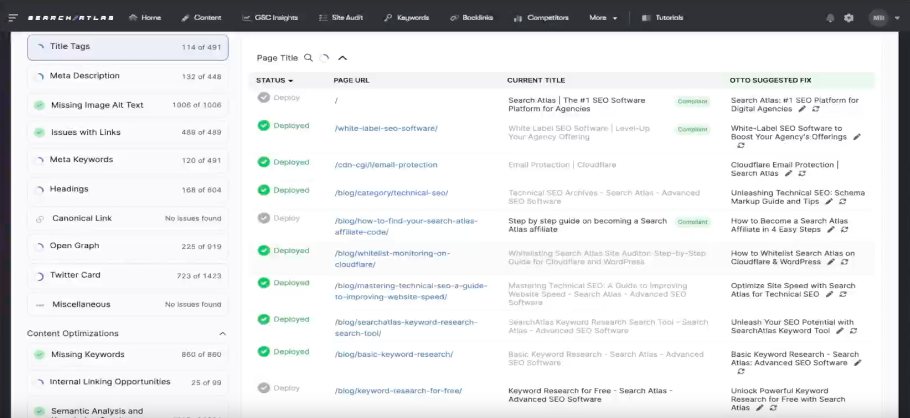
In fact, once you integrate the OTTO pixel into your website header, OTTO begins a comprehensive audit of your site to uncover technical issues and highlight strategic opportunities for improvement.
Using insights from the Search Atlas Holistic SEO blueprint and your website’s Google Search Console data, OTTO generates personalized recommendations tailored to your site’s unique needs.
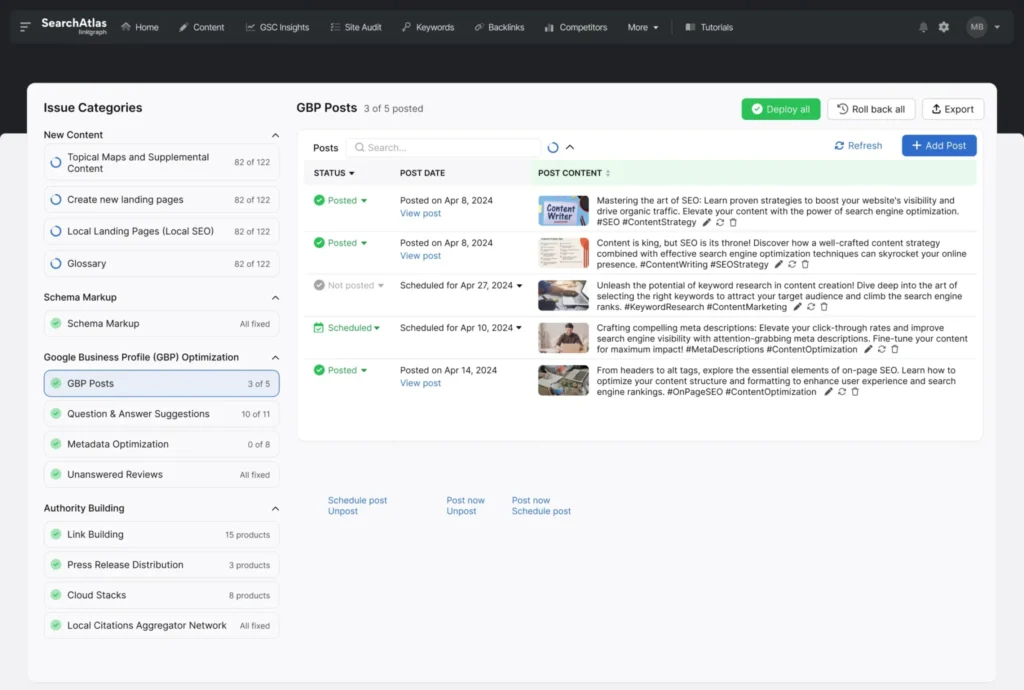
After reviewing and approving these suggestions within your dashboard, OTTO implements the changes directly on your website in real-time, regardless of the content management system (CMS) you use.
OTTO takes the grind out of SEO, letting you focus on growing your business while still crushing Google’s quality and ranking standards. Start by adding your business info to the Knowledge Graph, giving our AI the insights it needs to know your brand inside and out.
Then, supercharge the experience by connecting your Google Search Console data to unlock hyper-tailored SEO recommendations that drive results. It’s smarter, faster, and built just for you!
Mastering Meta Tag Optimization Starts With Efficient Implementation
Mastering meta tag optimization is critical for the success of any digital marketing strategy. And as we covered, implementing meta tags correctly requires a careful balance of targeted keywords, readability, and succinctness, ensuring content aligns with both search algorithms and user expectations.
Luckily, with SEO tools like OTTO, it has never been easier to rely on the power of AI to recommend, review, and deploy the most optimal meta tags across your site.
Want to see OTTO in action? Start a free trial today!


